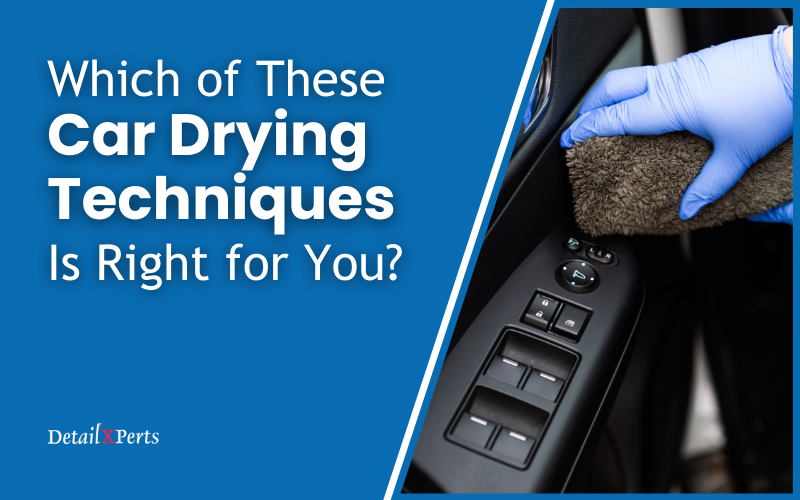Drying is one of the most important steps in preserving your vehicle’s newly washed surface. Without proper car drying techniques, water spots and oxidation might damage your prized possession. The drying techniques that best suit your car’s specific needs during a particular season can lead to an extended lifespan. There are two major techniques to consider: the conventional and the modern.
Conventional Car Drying Techniques
Well-known conventional methods include affordable textiles, such as terry cloth towels, chamois, and microfiber towels.
Terry Cloths
Despite their inexpensive appeal, terry cloth towels are the least recommended for any car during any season. Terry cloth’s coarse material is ineffective in absorbing water. Ultimately, this leads to a higher frequency of water spots, scratches, and lint traces. Although they are convenient in a pinch, most professionals would suggest other alternatives.
Microfiber Towels
Unlike standard terry cloth towels, the microfiber towel’s waffle-weave texture captures moisture. Additionally, it does not scratch a car’s paint finish. They come in either standard towel form or a hand mitt. This is best used in the spring and summer months when the warm temperature can aid in the car drying process. Also, since microfiber towels work best on car bodies and not on glass surfaces, a squeegee would function as a complement for drying windows.
Chamois
Among the conventional methods, chamois with real leather finish is the best of car drying techniques. Chamois leaves no scratches and can absorb moisture quickly and efficiently (which means no water spots). In addition, a detailer or drying agent, such as wax, can enhance the car’s exterior while giving it a water-resistant coating. Although you can use the chamois year-round on any car finish, this method benefits cars most through the fall and winter months.
Modern Car Drying Techniques
As technology continues to advance, modern drying technologies have simplified the process. Modern techniques include water blades, air dryers, steam dryers, and IR dryers. You can either apply these methods at home or go for professional auto detailing services. They produce the most impressive results due to their quick, paint-safe processes.
Water Blade
The most affordable modern method is the water blade. The water blade functions like a squeegee but has the flexibility to dry both the car’s body and its windows. This method is safe for all paint finishes and removes water quickly without leaving any spots. Like microfiber towels, water blades are best for the spring and summer months when cool winds do not interfere with the drying process.
Air and Steam Dryers
In contrast to water blades, air dryers and steam dryers use powerful elements to quickly and seamlessly eliminate moisture. They are safe for all paint finishes since they only target water without affecting the paint. These methods are most recommended during the spring and summer time with moderate temperatures. Humidity can be easily controlled, leaving little time for water spots to form.
IR Dryer
The most advanced of the modern car drying techniques is the IR Dryer or infrared heat drying system. IR dryers use heat distribution technology that can dry even the areas that are difficult to reach. Since these machines are lightweight and have the ability to turn in different directions, the drying process is at its quickest and most efficient. IR dryers are best in the fall and winter months because the heating system prevents cool temperatures from causing damage to the car.
In Conclusion
Both conventional and modern car drying techniques have their strengths and weaknesses. When using conventional methods at home, they provide a hands-on experience but tend to be time-consuming. However, although applying modern techniques on your own is doable, the start-up cost of maintaining the machinery can be expensive. Professionals can be the more cost efficient, eco-friendly, and time-saving solution for either method. Whether conventional or modern, you have the power to decide what’s best for you and your big investment – your vehicle.
Enjoyed this post? Sign up for our newsletter to receive more valuable tips, ideas, coupons, and extras!





